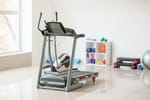Monitoring blood pressure regularly is crucial for maintaining cardiovascular health and preventing potential health complications.
High blood pressure, often referred to as a "silent killer," can lead to serious issues like heart attacks, strokes, and kidney failure if not managed effectively.
By keeping track of blood pressure at home, individuals can gain valuable insights into their health status and detect changes early, allowing for timely interventions and lifestyle adjustments.
Routine monitoring empowers individuals to take proactive steps in collaboration with healthcare professionals to manage and mitigate risks.
Moreover, understanding one's blood pressure trends can aid in evaluating the efficacy of medications or adjustments in diet and exercise, contributing to better overall well-being.
To effectively measure blood pressure at home, having the right equipment is essential.
The most critical piece of equipment is a reliable blood pressure monitor, with choices ranging between manual models, which require a stethoscope and manual pump, and digital models, which often provide convenience with automatic inflation and easy-to-read screens.
Digital monitors are generally recommended for home use due to their user-friendly nature and consistency in measurements.
Ensure that the cuff that accompanies the monitor fits snugly around the upper arm, as an improper fit can lead to inaccurate readings.
Accessories such as a carrying case for the monitor can be beneficial for consistent monitoring while traveling.
For those seeking advanced features, some monitors offer connectivity to health apps, enabling easy tracking and sharing of data with healthcare providers.
Understanding normal blood pressure readings is essential for accurately assessing one's cardiovascular health.
Blood pressure readings are typically expressed with two numbers: systolic and diastolic pressure.
The systolic number, which is the higher of the two, measures the pressure in the arteries when the heart beats, while the diastolic number, the lower value, reflects the pressure between beats when the heart is at rest.
A normal range for adults is generally considered to be around 120/80 mm Hg. Values above this range may indicate elevated hypertension levels, necessitating lifestyle changes or medical intervention.
Conversely, values significantly below the normal range might suggest hypotension, requiring different considerations.
Understanding these numbers enables individuals to interpret their results accurately, facilitating effective communication with healthcare professionals and promoting proactive health management.
Step 1: Preparation Before Measuring
Proper preparation before measuring blood pressure is paramount to ensure the accuracy and reliability of the readings.
This initial step involves several important considerations, including selecting the appropriate blood pressure monitor that suits personal needs and ensuring the measurement environment is calm and controlled.
Adequate preparation also encompasses personal readiness, where avoiding stimulants like caffeine, abstaining from strenuous activity, and wearing suitable clothing all contribute to obtaining an accurate blood pressure measurement.
By attending to these preparatory measures, individuals can reduce potential variables that may affect readings, providing a clearer picture of their cardiovascular health status.
Choose The Right Blood Pressure Monitor
Types Of Monitors: Manual Vs. Digital
When selecting a blood pressure monitor, understanding the differences between manual and digital models is crucial.
Manual monitors, often used in clinical settings, consist of a cuff, a rubber bulb for inflation, and a stethoscope to listen to the arterial blood flow, requiring skill to use accurately.
They are generally reliable but demand proficiency and practice for accurate home use.
On the other hand, digital monitors are more user-friendly, ideal for personal use, and usually come equipped with a cuff that automatically inflates at the push of a button, offering easy-to-read digital displays.
Digital monitors may also include features such as memory storage and digital connectivity for tracking readings over time.
The choice between manual and digital monitors hinges on the user's comfort level with the technology, the necessity for precision, and the context of use.
Key Features To Look For
When considering which blood pressure monitor to purchase, several key features should guide your decision.
Accuracy is paramount, so look for monitors that have been validated by reputable health organizations such as the American Heart Association.
Ease of use is another critical factor—features like large, backlit displays, one-touch operation, and clear instructions can greatly enhance the user experience, especially for individuals with limited technical skills.
Memory storage for previous readings is beneficial for tracking blood pressure trends over time, aiding in more informed discussions with healthcare providers.
Some advanced models offer smartphone connectivity, allowing for data to be seamlessly uploaded to health management apps.
Ensure the cuff size is appropriate for the user, as an ill-fitting cuff can lead to inaccurate readings.
By prioritizing these features, individuals can select a monitor that better suits their needs, ensuring effective and convenient blood pressure management.
Tips For Purchasing A Reliable Device
When purchasing a reliable blood pressure monitor, it is essential to consider various factors that ensure both accuracy and user satisfaction.
To begin with, choosing a device from a reputable brand known for its precision and durability can provide peace of mind.
Checking for certifications or endorsements from respected medical organizations can further validate the monitor's reliability.
It's also advisable to read user reviews and expert recommendations to gain insights into performance and ease of use.
Consider the monitor's features, ensuring they align with personal health needs, such as memory storage or smartphone connectivity.
Lastly, verify warranty terms and customer service options, as reliable support may be needed for troubleshooting or repair.
By thoughtfully evaluating these aspects, you can select a blood pressure monitor that effectively meets your health monitoring requirements.
Prepare The Environment
Find A Quiet And Comfortable Spot
Finding a quiet and comfortable spot is essential when preparing to measure your blood pressure accurately.
A serene environment helps minimize stress or anxiety that could influence the readings.
Choose an area where you can sit comfortably with your back supported, such as a quiet room or a designated corner free from noise and disturbances.
It's important to have a table or flat surface adjacent to allow your arm to rest at heart level during the measurement.
Lighting should be adequate to read the monitor clearly without straining your eyes.
Ensure you have privacy to relax and focus, avoiding any distractions that might disrupt your peace during the process.
By carefully selecting and preparing your environment, you enhance the likelihood of obtaining precise and reliable blood pressure readings.
Ensure A Room With The Appropriate Temperature
Maintaining an appropriate room temperature is a crucial element in achieving accurate blood pressure readings.
Extreme temperatures, whether too hot or too cold, can cause blood vessels to constrict or dilate, potentially affecting the measurement results.
Aim for a comfortable, stable room temperature where you're neither shivering nor sweating.
This helps in maintaining normal circulatory functions while also ensuring a calm bodily state, both of which are necessary for reliable readings.
Dress in light, non-restrictive clothing that allows for easy access to your arm without compromising comfort.
By attending to these environmental factors, you create an optimal setting that supports consistent and precise blood pressure monitoring.
Minimize Distractions And Noise
Maintaining a distraction-free environment is pivotal for obtaining accurate blood pressure readings.
High noise levels or nearby activities can lead to stress and fluctuations in your measurements.
Find a space where you can minimize interruptions, such as turning off electronic devices like televisions and radios, and request family members or colleagues to refrain from interruptions during the process.
Silence notifications on your smartphone to prevent any sudden disturbances.
Creating a routine around your measurement times can also help others accommodate your need for quiet.
By ensuring a peaceful environment, you not only improve the accuracy of your readings but also establish a calming routine that may enhance the consistency of your monitoring over time.
Prepare Yourself
Avoid Caffeine And Exercise 30 Minutes Prior
Consuming caffeine or engaging in exercise shortly before measuring your blood pressure can lead to inaccurate results.
Both caffeine and physical activity can temporarily raise blood pressure levels, thereby skewing the readings.
To ensure a true representation of your regular blood pressure, it's advisable to avoid coffee, tea, energy drinks, and caffeinated sodas at least 30 minutes before taking a reading.
Similarly, refrain from vigorous exercises like running or weight lifting within this timeframe.
Instead, use this period to rest and relax, allowing your body to return to a baseline state.
By adhering to these guidelines, you enhance the reliability and consistency of your blood pressure measurements, allowing for more accurate assessments by healthcare providers.
Sit Quietly For At Least Five Minutes
Sitting quietly for at least five minutes before measuring your blood pressure is vital to achieving accurate readings.
This period allows your cardiovascular system to stabilize after any prior physical activities or emotional stress, which could otherwise impact your results.
Find a peaceful spot where you can sit with your feet flat on the floor and your back supported, ensuring that your arm is resting comfortably at heart level.
Use these minutes to focus on slow, deep breathing, helping to further calm your body and mind.
Avoid engaging with screens or conversations during this time, as they might inadvertently raise your heart rate.
By incorporating this brief period of tranquility into your blood pressure routine, you set the stage for obtaining reliable measurements indicative of your true health status.
Wear Loose-Fitting Clothes That Expose The Upper Arm
Wearing loose-fitting clothing that exposes the upper arm is essential when preparing to measure your blood pressure.
Snug or restrictive garments can impede the blood flow, potentially leading to inaccurate readings by exerting unnecessary pressure on the arm.
Opt for short sleeves, or roll up long sleeves to allow the cuff to fit securely and properly on the upper arm, facilitating an unimpeded measurement.
The clothing choice not only accommodates the required setup for an accurate reading but also ensures your comfort throughout the process, minimizing any discomfort that could distract you or raise your stress levels.
By paying attention to your attire, you enhance the accuracy and reliability of the blood pressure readings, making them more reflective of your actual cardiovascular health.
Step 2: Proper Measurement Technique
Accurate blood pressure measurement relies heavily on the method used, making proper measurement techniques crucial for obtaining reliable results.
This step encompasses several important practices, from correctly positioning the arm to selecting the appropriate cuff size, all of which contribute to the validity of the readings.
Proper measurements begin with understanding the basic principles of blood pressure monitoring and adhering to recommended guidelines.
By committing to a meticulous approach, individuals can ensure that the data collected reflects true arterial pressures, which is essential for monitoring cardiovascular health and making informed healthcare decisions.
As you continue with the measurement process, focusing on technique will enhance the accuracy and consistency of your results.
Position Your Body Correctly
Sit Upright With Your Back Supported
Sitting upright with your back supported is a fundamental aspect of positioning your body correctly for blood pressure measurement.
This posture ensures that your body is stable and relaxed, which is essential for accurate readings.
Having your back supported helps in maintaining a neutral spine position, preventing tension in the muscles that could inadvertently affect the measurement.
Ensure that your chair is comfortable and provides sufficient lower back support; your feet should be flat on the floor to promote balanced alignment.
This posture also facilitates proper blood flow, minimizing any external influences that might distort the readings.
By adopting this position, you create an optimal setting for effective and precise blood pressure monitoring, contributing to better management of your health.
Keep Feet Flat On The Floor
Maintaining a position with your feet flat on the floor is a key component of accurate blood pressure measurement.
This posture helps to maintain a stable and balanced alignment of the body, which is crucial for ensuring consistent readings.
When your feet are flat, it supports even circulation and prevents unnecessary tension in the legs or core that might affect your blood pressure.
Sitting with crossed legs or on tiptoes can introduce variations in measurement by inadvertently altering blood flow or creating muscle tension.
Keeping your feet placed flat provides a foundation for the rest of your body, ensuring that your circulatory system remains undisturbed and reflects your true blood pressure level during the assessment.
Rest Arm At Heart Level
Resting your arm at heart level is a vital aspect of ensuring accurate blood pressure measurement.
When the arm is positioned at heart level, it aligns with your heart's position, providing a true representation of your arterial pressure.
If the arm is too low or too high, it can lead to erroneous readings—typically higher or lower than the actual pressure, respectively.
To achieve the correct height, use a table or an armrest, making sure your arm is resting comfortably with the palm facing upwards.
This position not only facilitates proper blood flow through the brachial artery, which is utilized in measurement but also minimizes any potential muscle strain or pressure that might skew the results.
Ensuring that your arm is at heart level creates a stable and suitable environment for obtaining reliable and consistent blood pressure readings, which is critical for tracking cardiovascular health accurately.
Apply The Cuff Properly
Wrap The Cuff Snugly Around The Upper Arm
Wrapping the cuff snugly around the upper arm is a crucial step in obtaining accurate blood pressure measurements.
The cuff must be positioned correctly—approximately one inch above the elbow—to ensure it captures arterial pressure accurately without slippage.
A snug fit means the cuff is neither too tight nor too loose; it should allow space for about one or two fingers to slide comfortably beneath it.
An improperly fitted cuff can lead to erroneous readings, either too high or too low, thus misleading health assessments.
The snug placement allows for even pressure distribution as the cuff inflates, ensuring the measurement reflects the true state of your cardiovascular system.
Paying attention to this detail enhances the reliability of your readings and supports effective health monitoring.
Ensure The Cuff Is Placed Directly On The Skin
Ensuring the cuff is placed directly on the skin is essential for obtaining precise blood pressure readings.
Any barrier, such as clothing, between the skin and the cuff can dampen the transmission of pressure waves, leading to less accurate results.
By placing the cuff directly against the skin, you eliminate variations and potential errors caused by different fabric textures or thicknesses.
This direct contact ensures that the cuff can accurately detect the arterial pressure as it inflates and deflates, providing a true measure of blood pressure.
Bare skin ensures the cuff sensor is receiving clear signals without distortion, thus supporting a more reliable health assessment.
When preparing for measurement, always make sure to roll up sleeves entirely or wear a short-sleeved shirt to prevent fabric interference.
Check The Position Indicator On The Cuff
Checking the position indicator on the cuff is a vital step to ensure the accuracy of your blood pressure readings.
Most cuffs come equipped with a guide mark or position indicator that aligns with the artery inside your arm.
This mark acts as a crucial reference point and should be positioned directly over the artery to obtain precise measurements.
If the position indicator is off-center, it can lead to misleading readings—either overstating or understating your blood pressure.
Ensuring the indicator is correctly aligned ensures that the cuff captures the arterial pulse accurately during inflation and deflation.
Taking a moment to verify this alignment contributes to the reliability of the measurement process and enhances your overall health monitoring practices.
Take The Reading
Start The Machine And Remain Still And Silent
Remaining still and silent after starting the blood pressure machine is essential for obtaining accurate measurements.
Movement or talking during the process can introduce fluctuations in your heart rate or create muscle tension, which may lead to incorrect readings.
To ensure precision, sit comfortably with your feet flat on the floor and your arm relaxed and supported at heart level.
Focus on taking slow, steady breaths as the machine cycles, allowing the device to perform without interference.
By minimizing movement and external noise, the machine can accurately detect subtle fluctuations in arterial pressure, thus providing a reliable assessment of your cardiovascular health.
This discipline is crucial not only for consistent readings but also for correctly monitoring and managing your health over time.
Record The Numbers On The Device
Recording the numbers on the device is a crucial step in tracking and managing your blood pressure over time.
After the measurement is complete, the device will display the systolic and diastolic numbers, which represent your arterial pressure during and between heartbeats, respectively.
Make sure to note these numbers accurately in a logbook or a digital health app to facilitate trend analysis and provide valuable data to your healthcare provider.
Consistent recording of your readings can help identify changes in your cardiovascular health, detect patterns, and enable more informed medical decisions.
This systematic approach to logging blood pressure readings fortifies your health monitoring practices, empowering you with insights that are essential for the effective management of well-being.
Pro-Tip: Keeping a blood pressure logbook offers numerous benefits for managing your cardiovascular health.
By consistently documenting your readings, you gain insightful visibility into your blood pressure trends over time, allowing you to identify fluctuations and potential health issues early.
This detailed record can facilitate more precise and informed discussions with your healthcare provider, helping to tailor treatment plans effectively.
Plus, it empowers you to take an active role in your health management by making data-driven decisions.
For those committed to proactive health monitoring, consider starting a logbook today.
Ready to take control?
Start your logbook now and witness the positive impact on your health journey!
Repeat The Process For Consistency After A Brief Rest Period
Repeating the process for consistency after a brief rest period is an integral part of obtaining reliable blood pressure readings.
By allowing a few minutes of rest between measurements, the body has time to return to its baseline state, minimizing the impact of temporary fluctuations such as stress or recent physical activity.
During the rest period, it is important to remain seated in a comfortable and quiet setting, ensuring the arm is at heart level.
Taking multiple readings allows you to average the results, which can lead to a more accurate depiction of your typical blood pressure levels.
This practice helps eliminate outlier readings and supports a thorough understanding of your cardiovascular health, providing data consistency that is crucial for effective health monitoring and decision-making by you and your healthcare provider.
Step 3: Recording And Understanding Results
Understanding and accurately recording your blood pressure results is a fundamental aspect of effective health monitoring.
As you embark on Step 3, it is important to focus on both the documentation of your readings and the interpretation of these values to gain insightful perspectives on your cardiovascular health.
This step serves as a bridge from merely collecting data to utilizing it meaningfully, enabling you to track trends, identify potential health issues, and make informed decisions in collaboration with your healthcare provider.
By meticulously logging and interpreting your blood pressure readings, you enhance your ability to maintain optimal health and proactively manage any emerging cardiovascular concerns.
Record Your Readings
Keep A Log Of Your Blood Pressure Measurements
Keeping a log of your blood pressure measurements is an invaluable practice for long-term health management.
By systematically recording each reading, you create a detailed chronology of your cardiovascular health that can reveal important trends and fluctuations over time.
This log serves as a comprehensive resource that you can share with your healthcare provider, allowing for more personalized and informed medical advice.
Regularly updating your log also empowers you to identify any patterns linked to lifestyle or dietary changes, stress levels, or medication adjustments.
Whether you use a traditional notebook or a digital application to maintain your log, the key is consistency and accuracy.
A thorough log not only supports proactive health monitoring but also enhances your ability to take charge of your well-being.
Note Down Any Irregularities Or Patterns
Noting down any irregularities or patterns in your blood pressure log is crucial for a comprehensive understanding of your cardiovascular health.
These observations can include unexpected spikes or drops in readings, variations during different times of the day, or changes linked to specific activities or stressors.
By diligently recording these anomalies, you equip yourself and your healthcare provider with critical information that can aid in diagnosing potential issues, adjusting treatment plans, or suggesting lifestyle modifications.
Recognizing patterns, such as consistently higher readings in the morning or after meals, can also help identify underlying causes that may need attention.
This process not only enhances the quality of your health monitoring efforts but also empowers you to take proactive steps in maintaining your overall well-being.
Use A Digital App If Available For Easier Tracking
Using a digital app for tracking your blood pressure readings introduces convenience and precision to your health monitoring routine.
Digital apps offer user-friendly interfaces that simplify the task of logging each measurement, providing features such as automated reminders, trend charts, and data analysis tools.
By using a digital platform, you minimize the risk of data loss or misplacement that can occur with traditional paper logs.
Many apps allow seamless sharing of your information with healthcare providers, enabling them to provide timely advice and treatment adjustments based on accurate and up-to-date data.
Whether you're at home or on the go, a digital app facilitates continuous and accessible health management, empowering you to make informed decisions about your cardiovascular health with ease and efficiency.
Understand The Readings
Know What Systolic And Diastolic Numbers Mean
Understanding what systolic and diastolic numbers mean is crucial for interpreting blood pressure readings effectively.
The systolic number, which is the first or top number in a reading, measures the pressure in your arteries when your heart beats and pumps blood.
It reflects how much pressure your blood is exerting against artery walls during heartbeats.
On the other hand, the diastolic number, which is the second or bottom number, measures the pressure in the arteries when the heart is resting between beats.
Together, these numbers provide a snapshot of your cardiovascular health, indicating whether your blood pressure falls within a normal range or if there are potential issues that need to be addressed.
Knowing the significance of these numbers enables you to take proactive steps in managing your health and collaborating with healthcare providers to prevent or manage hypertension and related complications.
Identify What Ranges Are Considered Normal, Elevated, Or Hypertensive
Identifying what ranges are considered normal, elevated, or hypertensive in your blood pressure readings is essential for effective health management.
A normal blood pressure range is typically less than 120/80 mmHg, indicating optimal cardiovascular health.
Readings that consistently fall within the range of 120-129 systolic and less than 80 diastolic are categorized as elevated, suggesting the need for lifestyle modifications to prevent further increases.
Hypertension, or high blood pressure, is classified in stages: Stage 1 hypertension involves systolic readings of 130-139 or diastolic readings of 80-89 mmHg, while Stage 2 hypertension is defined by systolic readings of 140 or higher or diastolic readings of 90 or higher.
Recognizing these ranges allows you to understand your cardiovascular status better and collaborate with healthcare providers to implement strategies aimed at maintaining or achieving healthy blood pressure levels.
Recognize The Importance Of Consistency In Readings
Consistency in blood pressure readings is fundamentally important for deriving accurate assessments of your cardiovascular health over time.
Consistent readings provide a reliable dataset that reflects your usual blood pressure levels, helping to differentiate between temporary fluctuations and genuine health concerns.
Inconsistent readings, on the other hand, can lead to false conclusions and potentially inappropriate treatment adjustments.
By measuring your blood pressure at regular intervals, ideally at the same time of day and under similar conditions, you ensure that the data collected is reflective of your true health status.
This regularity empowers both you and your healthcare provider to make informed decisions, track the effectiveness of any interventions, and make necessary lifestyle or medical adjustments with confidence.
Consult With A Healthcare Professional
Understand When To Seek Medical Advice
Understanding when to seek medical advice is a key component in managing blood pressure effectively and preventing potential complications.
If you consistently record blood pressure readings that are significantly higher or lower than the normal range, it's imperative to consult with a healthcare professional promptly.
Also, seek medical attention if you experience symptoms such as severe headaches, blurred vision, chest pain, or shortness of breath, as these could indicate a hypertensive crisis or other serious cardiovascular issues.
Regular check-ins with your healthcare provider are beneficial even if you are not experiencing noticeable symptoms, as they can offer guidance on preventive strategies, evaluate the effectiveness of current treatments, and suggest necessary changes to your health regimen.
Being proactive in seeking medical advice ensures timely intervention and helps maintain optimal cardiovascular health.
Discuss Your Readings With Your Doctor
Discussing your blood pressure readings with your doctor is a vital step in managing your cardiovascular health effectively.
Sharing your records provides your doctor with valuable information that can help diagnose any issues and tailor treatment strategies to your specific needs.
Bringing a log of your readings, including the circumstances under which they were taken, such as time of day and any accompanying symptoms, makes it easier for the doctor to identify patterns and potential triggers.
This dialogue fosters a collaborative approach, where you can raise any concerns or questions you have about the readings and their implications.
With this information, your doctor can make more informed decisions regarding medication adjustments, lifestyle recommendations, or the need for further diagnostic tests, enhancing your health outcomes.
Learn About The Implications Of High Or Low Blood Pressure
Understanding the implications of high or low blood pressure is essential in managing long-term health and preventing severe complications.
High blood pressure, or hypertension, can lead to significant health issues such as heart disease, stroke, kidney damage, and vascular problems if left unmanaged.
It places additional strain on your heart and blood vessels, increasing the risk of life-threatening conditions.
Conversely, low blood pressure, or hypotension, can cause dizziness, fainting, and increased risk of injury from falls, and in extreme cases, it can indicate underlying health concerns that need attention.
Recognizing the dangers associated with both extremities of blood pressure allows individuals to pursue lifestyle changes and medical treatments to stabilize these critical measures, thereby promoting overall health and well-being.
Regular monitoring and education on the implications of these conditions empower individuals to become proactive in their health management.
Pro-Tip: Invest in a High-Quality Blood Pressure Monitor
Owning a high-quality blood pressure monitor is invaluable for maintaining a clear and consistent understanding of your heart health.
Accurate readings at home allow for early detection of potential issues, enabling you to address them promptly with your healthcare provider.
High-quality monitors often come with advanced features like memory storage, heart rate monitoring, and irregular heartbeat detection, ensuring comprehensive insights into your cardiovascular status.
By investing in a reliable device, you empower yourself with the tools needed to actively monitor your blood pressure, reducing the risk of hypertension-related complications.
Take control of your heart health today by choosing a top-tier blood pressure monitor that suits your lifestyle and budget, and consult with a healthcare professional to learn more about managing your readings effectively.
Conclusion
Regular monitoring of blood pressure is a cornerstone of effective cardiovascular health management.
It enables individuals to maintain a keen awareness of their blood pressure trends, facilitating the early detection of any potential anomalies or changes that may warrant further investigation or intervention.
Regular checks not only help detect high blood pressure patterns that could lead to serious health issues if untreated but also help in identifying drops in blood pressure that might indicate other health problems.
By keeping track of readings over time, you can work closely with your healthcare provider to tailor your treatment plan, ensuring it remains effective and responsive to your current health status.
This ongoing vigilance empowers you to make informed decisions regarding lifestyle adjustments, medication requirements, and other preventive measures to sustain or improve your cardiovascular health.
Accurate blood pressure measurements are crucial for making informed health decisions, and adhering to best practices ensures reliability.
To begin with, always use a validated and well-calibrated blood pressure monitor.
Sit in a quiet environment before measurement, allowing yourself to relax for at least five minutes.
Make sure to position your arm correctly, resting it at heart level, and use an appropriately sized cuff for your arm.
Avoid consuming caffeine, smoking, or engaging in vigorous exercise at least 30 minutes before taking readings.
Consistency is key, so consider measuring your blood pressure at the same times each day under similar conditions.
Record multiple readings on different days to capture a true reflection of your cardiovascular status, thereby strengthening the basis for any necessary medical consultations or lifestyle changes.
Maintaining ongoing health awareness and scheduling regular doctor consultations are pivotal components of proactive health management.
Understanding your current health status allows you to make informed lifestyle choices and take corrective measures promptly when necessary.
Regular consultations with your healthcare provider ensure that you receive professional guidance tailored to your needs, benefiting from early detection of potential health issues and timely interventions.
This partnership not only reinforces your understanding of personal health metrics but also encourages a consistent dialogue about emerging health trends and individualized care options.
By staying informed and engaged with your health through regular checkups, you empower yourself to sustain a balanced and informed approach to well-being, maximizing the chances of a healthier, longer life.
Download Our Free E-book!







